Mayday! When bombers crashed in Switzerland
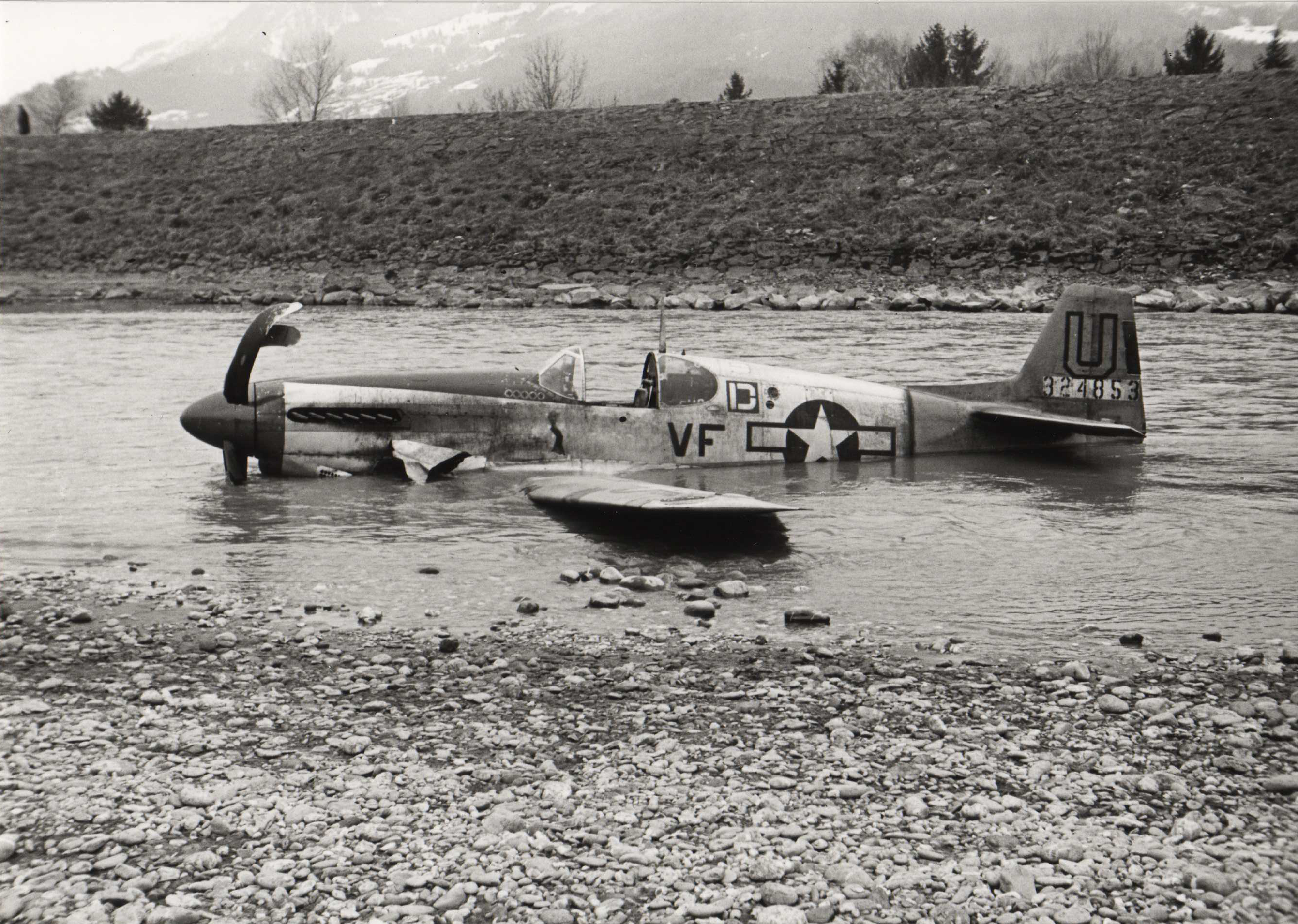
More than 250 aircraft crashed or made emergency landings in Switzerland during the Second World War. The authors of a photo book about the planes and the young men who flew them have collected a wealth of information – and would be grateful for any more.
“Children were usually first on the scene to welcome the crews,” Dani Egger told swissinfo.ch. “All the boys and girls from town would run to the bomber – they’d never seen a plane that big.”
At 51, Egger is too young to have experienced the war directly. His first memory of a so-called warbird, a vintage military aircraft, is of the Boeing B-17 Flying Fortress – with its 32-metre wingspan – displayed near a railway station in St Gallen for a few years in the 1960s.
“Whenever I went by train to St Gallen with my mother and brother, we always saw the big airplane standing there. About 25 years later, I remembered this and began to do some research and discovered its sad story [see box].”
One Allied bombing mission in March 16, 1944 – targeting the southern German cities of Augsburg, Ulm and Friedrichshafen – involved 740 planes. Of these, 23 didn’t return to base: seven went down in Switzerland (four made emergency landings and three crashed).
One of them, a Boeing B-17 Flying Fortress, was hit by German fighters over Augsburg so it headed to Switzerland, where it ditched in Lake Zug. One crew member died, but nine managed to parachute to safety, spending the rest of the war interned in Switzerland.
The plane sank largely intact to the bottom of the lake, where it stayed until 1952, when it was raised, restored and exhibited around the country.
In 1966, it travelled to St Gallen, where a businessman planned to build a “bomber theme park”. This never materialised, so in 1970 the plane went on display in St Moritz. But after a few years it was blocking a building development; since no buyer could be found, it was turned into scrap metal despite being of historical value.
The Flying Fortress was the last surviving bomber which had landed in Switzerland during the Second World War.
About eight years ago, Egger, who works in a marketing agency, got together with military collector Werner Schmitter to launch the Warbird website. It is a database for planes that went down in Switzerland during the Second World War and includes photos, documents, plane descriptions and personal accounts.
Egger, Schmitter and fellow military enthusiast Rolf Zaugg are now compiling a book focusing on photos of the 38 planes which crashed or made emergency landings in five northeastern cantons: St Gallen, Thurgau, Schaffhausen, Appenzell Inner Rhoden and Appenzell Ausser Rhoden.
The book, Strange Planes in Eastern Switzerland 1939-1945, is set to be published in May 2014 in German and English. The authors would be grateful for any additional information, such as pictures or personal stories.
Egger estimates that around 15 members of bombing raids held as internees in Switzerland are still alive in the United States.
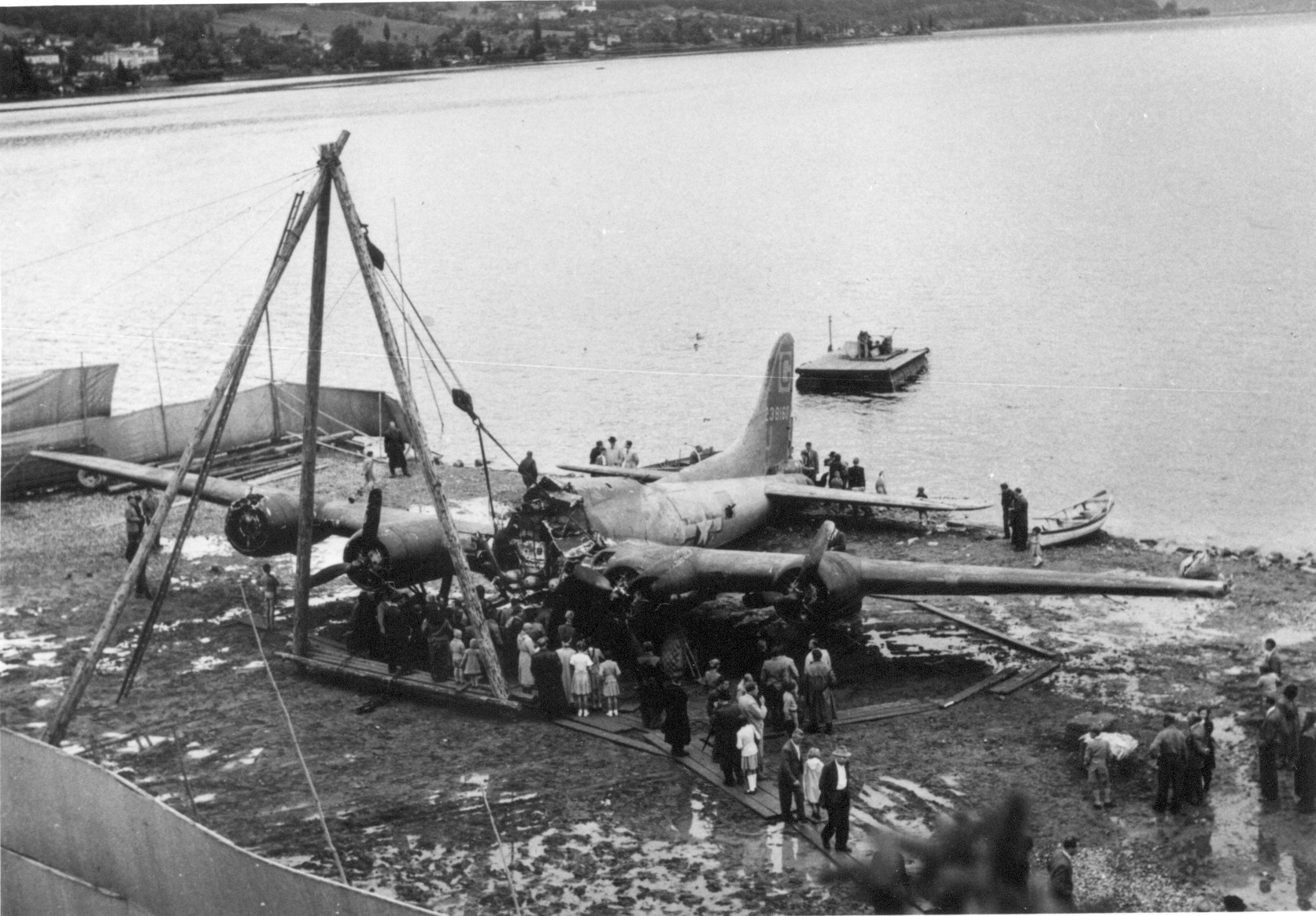
Swiss sanctuary
The book concentrates on the last two years of the war. Between 1943 and 1945 air battles raged over Germany on an almost daily basis, involving hundreds of planes.
The odds of surviving were not good. According to the website of the Royal Air Force Museum, the average age of the crew of a Lancaster Bomber – which on average completed 21 missions before being lost – was 22.
“The first guy to die in Switzerland drowned in Lake Constance – the plane went down and he couldn’t get out,” Egger said, adding that other people also died in crashes.
But most of the crews who came down in Switzerland survived – although some landings were smoother than others.
On February 22, 1945, 20-year-old Robert “Rocky” Rhodes took off in his North American P-51 Mustang from Italy to strafe the rail network between Lindau and Ulm in southern Germany. Hit by flak, he headed home, but his plane gave up the ghost over the Rhine and he pancaked on a gravel river bank.
Coming to a standstill in shallow water, Rhodes thought he was still in Germany, but locals who had hurried to the scene explained that he was in fact in Liechtenstein and safe.
“No Swiss were injured when the planes came down,” Egger said. “The pilots always tried to avoid built-up areas. But there are a few stories of planes being on autopilot and it’s lucky that nothing really bad happened like crashing into a mountain.”
Or crashing into wildlife. One German pilot who wanted to defect to Switzerland in October 1944 had to make two attempts to land in his chosen field in Waldkirch, St Gallen: the first time he was foiled by a herd of cattle.
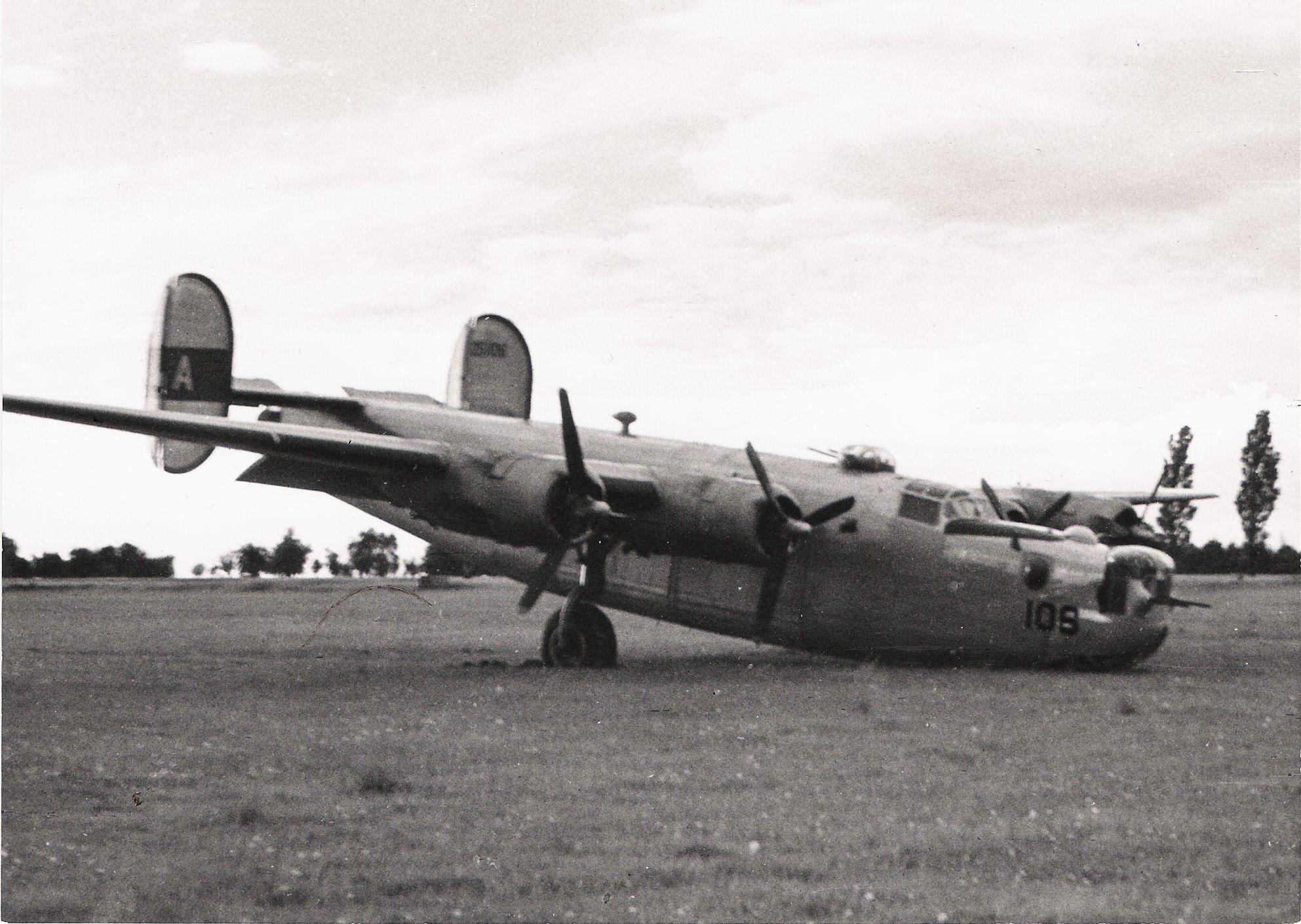
Hotel guests
Crews who landed in Switzerland ended up spending the rest of the war in internment camps.
“After interrogation and quarantine, the officers went to hotels in Davos – during the war they didn’t have many reservations! – and the others went to Adelboden and Wengen,” Egger said.
According to an American who was sent to DavosExternal link, “we had plenty to eat, but being bored from not doing very much of anything, we imagined that we were hungry all of the time”.
Egger says that some internees also tried to escape. “The ones who were really bored tried to get out of Switzerland and were helped by the Swiss and French Resistance”.
His book does not follow the fate of every crew member; rather it focuses on the aircraft and the events in Switzerland.
“About 120 planes were guided by Swiss pilots to the big military airfield at Dübendorf [outside Zurich], where they stayed until the end of the war. US Air Force mechanics would come from England to check and fix them and then a pilot and navigator would fly them back to England where they were scrapped,” he said.
“None of these planes still exists.”
If you have stories, information or photos about any of the planes which landed in Switzerland during the Second World War – perhaps you were even on board? – Dani Egger would very much like to hear from you at dani@warbird.ch
During the Second World War, American and British planes bombed Switzerland about 70 times, killing 84 people.
The most-hit areas were Schaffhausen (where a bombing on April 1, 1944, killed 40 people and injured 100), Basel, Geneva, Renens (canton Vaud) and Zurich.
Most bombings were put down to navigational error. Some historians, however, claim that in some cases the Allies wanted to send a warning to Switzerland for having collaborated with Germany during the war.
At the end of the war, the Allies compensated Switzerland for damage caused by bombing.
(Source: The Historical Dictionary of Switzerland)

In compliance with the JTI standards
More: SWI swissinfo.ch certified by the Journalism Trust Initiative









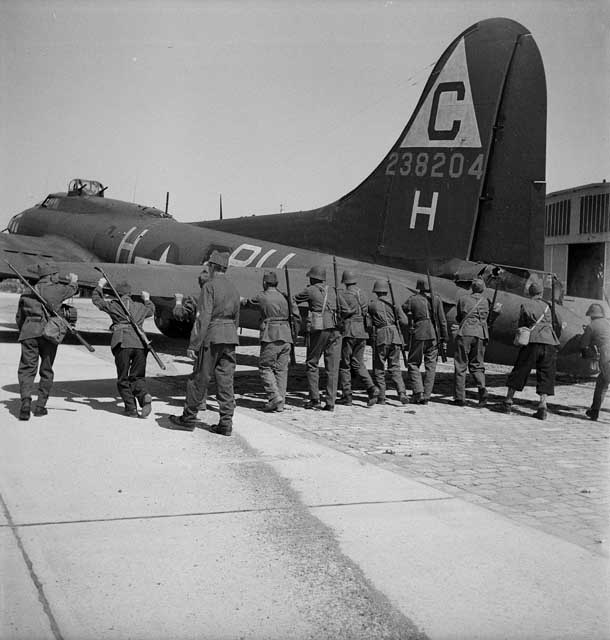
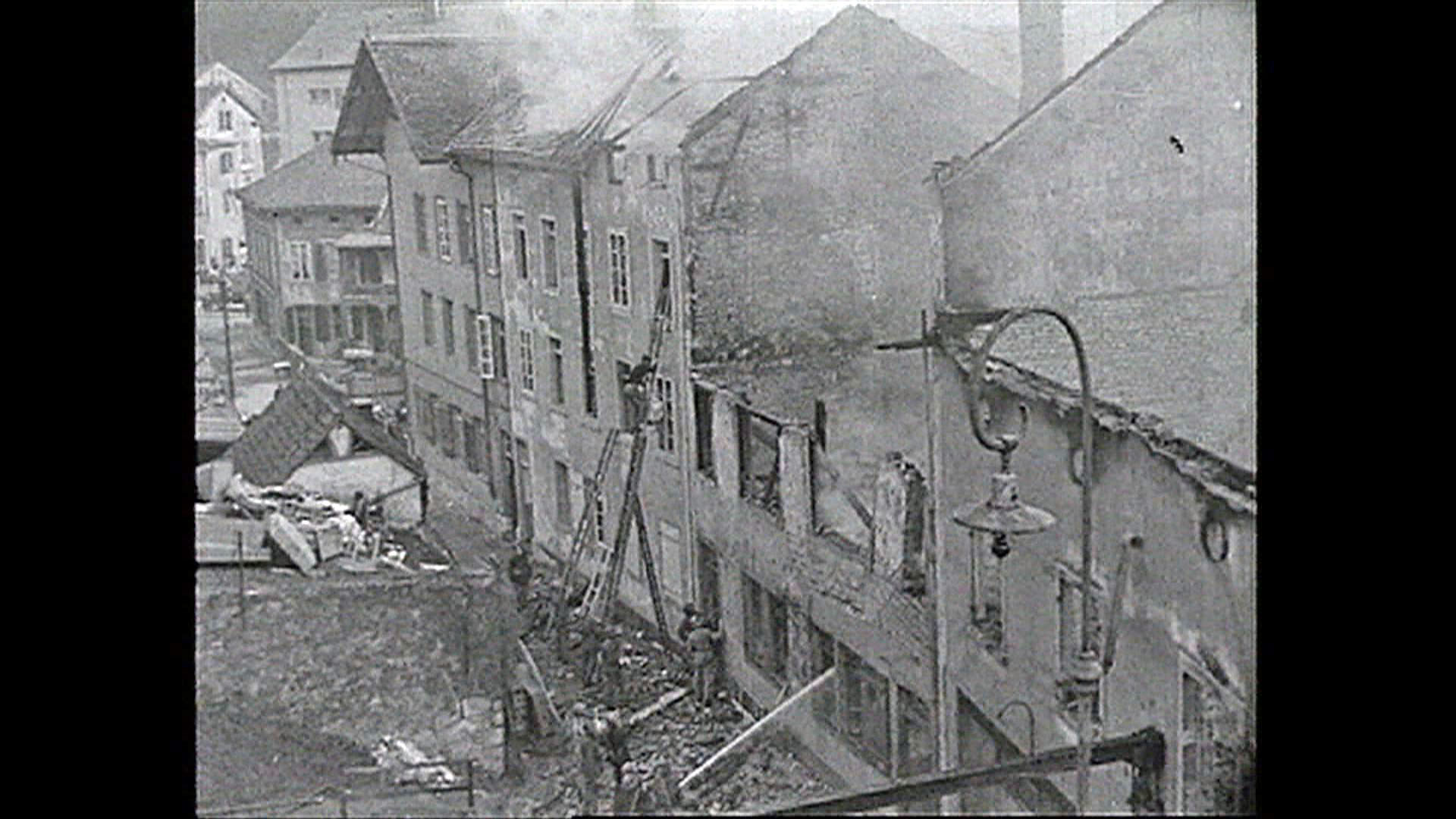
You can find an overview of ongoing debates with our journalists here . Please join us!
If you want to start a conversation about a topic raised in this article or want to report factual errors, email us at english@swissinfo.ch.